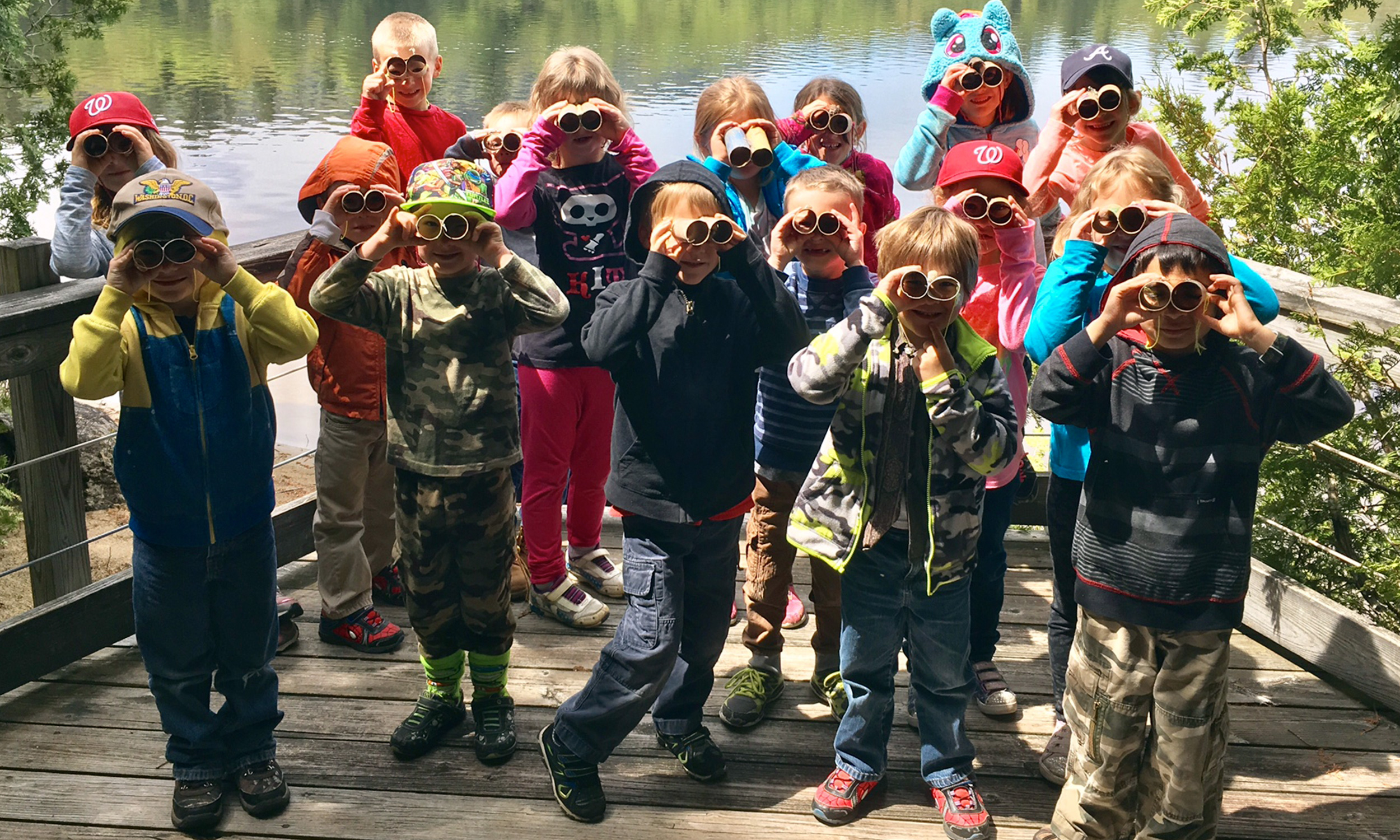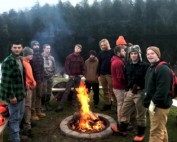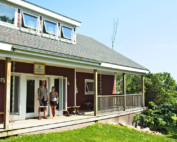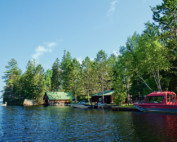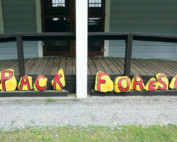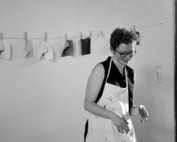By Karen B. Moore
C ardboard binoculars aren’t high-tech scientific equipment, but for a group of kindergartners visiting ESF’s Adirondack Interpretive Center (AIC) in Newcomb, they provided a look into another world.
Kindergartners from Schroon Lake were among the school groups to visit the AIC through the Connect Kids Field Trip Grants program administered by the New York State Department of Parks, Recreation and Historic Preservation. Under the program, schools are reimbursed up to $1,000 for the cost of field trips to a New York state park, nature center such as ESF’s Adirondack Interpretive Center in Newcomb, or historic site, or a Department of Environmental Conservation (DEC) site such as an environmental education center or a fish hatchery. It’s all about connecting children with nature and state history.
Erin Griffin, environmental education coordinator at ESF’s Newcomb Campus, which is home to the AIC, works with the teachers to design their field trips. “Most of our programs are based on research conducted at ESF’s Newcomb Campus,” she said.
The programs are designed to actively involve the students, she said. “They’re doing science, gathering data. The kids are absolutely engaged.”
In working with the Schroon Lake kindergartners, Griffin visited their classroom prior to the field trip to present a program on birds. The students learned about owls, dissected owl pellets (undigested parts of the owl’s food that is regurgitated) and made binoculars from cardboard tubes. When they got to the AIC, they used their binoculars for bird watching.
“I encouraged them to be quiet as we walked for a better chance to see birds,” said Griffin, which was a challenge with 20 kindergartners. “As we stood on the bridge, a loon surfaced on water in front of them. They got to look at the loon and it was really magical for them.”
“It looks kind of silly for the students to use cardboard binoculars,” said Griffin, “but that’s how they learn to find and follow an object. It helps them learn to use the real tools.”
During the 2016-2017 school year, close to 100 students, teachers and chaperones visited the Newcomb Campus through the grant program. Griffin expects there will be more schools this year, the grant’s second year. “We’re expecting to see more schools in this upcoming grant cycle now that there is increased awareness of the program,” she said.
Children learn about nature at the AIC.
For the 2017-18 school year, the grant program has expanded to $1 million, allowing for an increase in the amount of funding schools can request for overnight trips. The increase in overnight reimbursement will enable more schools to come for multiday programming or come from farther away, Griffin said.
Juniors and seniors from Beekmantown High School, in northern New York, did a two-day interdisciplinary program combining Advanced Placement biology and literature classes. The trip was a “closing experience after completing their final exams,” said Kerry Burdo, Beekmantown English teacher. “I wanted to use the experience in Newcomb to remind them, if not introduce them, to the wonders of the Adirondack Park,” she said. “It was a wonderful area for students to use what they learned in biology, identifying flora and fauna, sharing ideas and experiences; some wrote about them in journals.”
The students engaged in scientific pursuits and had a seminar with the AIC’s environmental philosopher, Dr. Marianne Patinelli-Dubay. The students participated in a Socratic Circle with Patinelli-Dubay prompting a rich discussion and stimulating the students to apply experiences, readings, and/or writings in their responses, said Burdo.
The seminar with Patinelli-Dubay focused on ethical motivations. The students were asked if it is enough to do the right thing, or must they also know why they are doing the right thing? The discussion took place after the students had already spent a full day and night at the AIC and had the opportunity to hike Goodnow Mountain and paddle canoes on Rich Lake.
“Stylistically, philosophy requires a shift away from the more linear, empirical way they’re accustomed to thinking and talking about the natural world, particularly in a biology or a literature class,” said Patinelli-Dubay. “In time they were able to see how applying this other method, this other lens provided them greater insights.”
During the 2016-17 school year, students came from Schroon Lake Central, Johnsburg Central School, Beekmantown High School and Romulus Central School. Programs covered a variety of topics. Students learned about salamanders and vernal pools, visited salamander research plots, collected data and identified species and the salamander’s role in the ecosystem. Others learned about sustainable forest activities while hiking Goodnow Mountain, and another program focused on watershed and lake ecology while canoeing on Rich Lake.
“Last year we hosted a cross section of groups through the grant program that truly exemplifies the types of programs we offer” said Griffin. The groups included a kindergarten class, a group of fifth graders and two high school groups.
Share
“They’re doing science, gathering data. The kids are absolutely engaged.”


